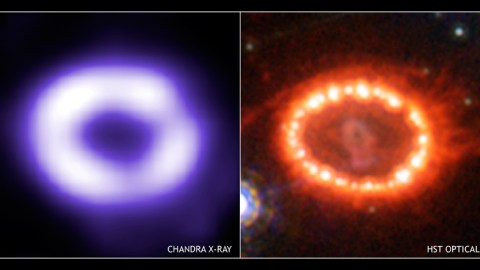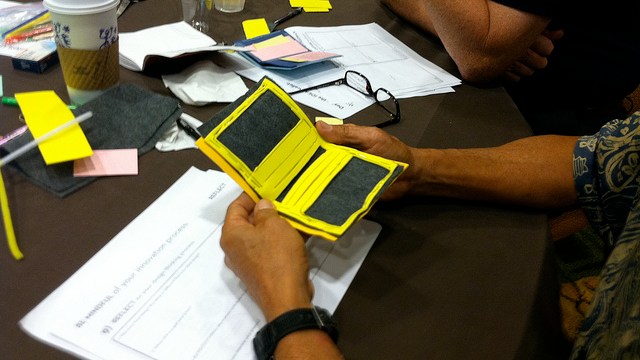Waiting for a Supernova

The poltergeists of physics. That is how scientists refer to neutrinos, the elementary particles that zip through our bodies and morph into different forms like “cosmic chameleons evading capture.” Neutrinos are also said to be “pathologically shy” in that they rarely interact with other particles. And yet, it is said that whenever anything cool happens in the universe, neutrinos are usually involved.
A gigantic supernova explosion would qualify as a cool cosmic event. Neutrinos, which travel at nearly the speed of light, would bring this information to us. Let’s say that a massive star dies on the far side of the Milky Way galaxy. We might not see this event with our optical telescopes because stellar dust obscures the visible light. However, the neutrinos would still get through.
“Because these particles don’t interact with much they can escape from the site of mayhem – basically from the core of the explosion unhindered and reach us and therefore confirm directly what’s going on there.”
So says Ray Jayawardhana, an astrophysicist at the University of Toronto and the author of Neutrino Hunters: The Thrilling Chase for a Ghostly Particle to Unlock the Secrets of the Universe.
In the video below, Jayawardhana explains how neutrino astronomy began in 1987 when three different neutrino detectors around the world suddenly detected two dozen neutrino. These particles carried information from a massive explosion in a nearby dwarf galaxy. This allowed scientists for the first time “to confirm the physics of what happens when a star explodes at the end of its life,” Jayawardhana explains.
The supernova SN 1987A was the nearest exploding star that we have known about in some 400 years – “pretty much since the invention of the telescope,” Jayawardhana says. “So that made it a big deal.” Now Jayawardhana and other physicists are hoping to catch a glimpse of a supernova explosion in our galaxy. Nobody knows exactly when this might occur, but thanks to the development of massive neutrino detectors, we would have an “unprecedented peek at the action.”
Watch the video here:
Finding exploding stars in the far reaches of the galaxy is merely one of the possible applications of neutrino research. Jayawardhana says that neutrinos could also help us to measure Earth’s internal heat, as well as understand how matter won over antimatter after the Big Bang.
Other creative, and even outlandish ideas have also been proposed such as using neutrino detectors to expose the nuclear capabilities of rogue nations and using neutrino signals for equity trading.
Image courtesy of Shutterstock





